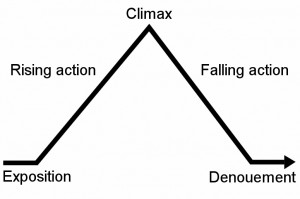This is a repost of my comments on the post regarding “Hills Like White Elephants.”
This is a post in response to the mentioned difficulties in teaching Earnest Hemingway’s “Hills Like White Elephants;” namely the double problem of students having difficulty deducing the theme of the story on their own; and then becoming embroiled in a discussion about the subject presented rather than the story itself. One possible solution readily presents itself: have the students examine the language used in the story first, in an effort to deduce what the indirectly – spoken subject matter between the two characters is. Critical thinking is an important skill for learners, especially learners of literature. The critical thinking community at http://www.criticalthinking.org lists several traits of a good critical thinker:
* Raises vital questions and problems, formulating them clearly and precisely
* Gathers and assesses relevant information, using abstract ideas to interpret it effectively
* Comes to well-reasoned conclusions and solutions, testing them against relevant criteria and standards
* Thinks openmindedly within alternative systems of thought, recognizing and assessing, as needs be, their assumptions, implications, and practical consequences
* Communicates effectively with others in figuring out solutions to complex problems
(http://www.criticalthinking.org/page.cfm?PageID=411&CategoryID=51)
We could help the students develop these skills, and solve the issue at hand by giving the students an activity like this:
1. “In this story, the American man and Jig are talking around an important issue, without ever mentioning what that issue could be. What is that issue? There are possible clues inside and outside the dialogue. In a small group make a list of these clues in the story, and then together brainstorm for a list of possible answers. At the end of the discussion, each group will present three answers to the class. We will then decide together which answer or answers are most likely.” – In this task the students would use the “subtleties of the language” as a tool to understand the subject matter of the story.
2. Discussion about the possible morality of the story might be a strength in disguise; so long as the teacher can relate the discussion to both the students’ lives and beliefs, and the story. James Henderson, in his book Reflective Teaching: Becoming an Inquiring Educator, recommends that teachers keep in mind these questions: “What is the relationship between what I am trying to teach and my students’ past experiences … [and] personal purposes?” Having the students interested in debating the topic of the story is a world of improvement over having them disinterested in it; and this can and should be used to a teacher’s advantage. Questions like: “What would you do in the Amercian’s / Jig’s situation? How about in a situation that was similar but not the same? Have you ever known anyone in this situation? Is there any indication in this story that Hemingway might feel one way or another? “ etc.
These activities are straightforward, and perhaps too straightforward. Perhaps a teacher could turn the confusion about the story’s subject matter to an advantage as well, and instead of the first activity I have mentioned, try something like this:
3. Divide the students into groups of four. Hand two students in each groups “the answer.” One of “the answers” is the right one (or one close enough to it, if that is your purpose); the other is not. Give the answer holders two minutes to think (or no time at all, depending on your group), and then each “answer” holder must convince the remaining students that they have the correct answer. The remaining students have to judge. At the end of the discussion (set a time limit), then the teacher will tally up how each group ended up voting. The class can then decide which of the answers is likelier, based on the available evidence from the story. The difficulty of this activity can be modified; for instance, the teacher could prepare four (or more) answer cards, thus leaving the class with more options at the end. However, this would leave certain groups with no “correct” answer. Some groups of students might not mind, but some might not like being “tricked’ in this way, so it would depend upon the situation. From experience, most of my students have enjoyed it when I was devious.
The problem here is, in some ways, only half a problem. The students mentioned were already interested in the issue, and only needed assistance developing the skills for identifying that issue from the text. By turning that uncertainty into a mystery to solve, a puzzle to figure out, a debate to win, or anything else the teacher knows their students might enjoy doing, a solution presents itself.
Brian MacDonald
PS Forgive the double post, but the formatting was destroyed when I pasted this into the “comment” section, and I was unable to edit my comment. This might be easier to read.
